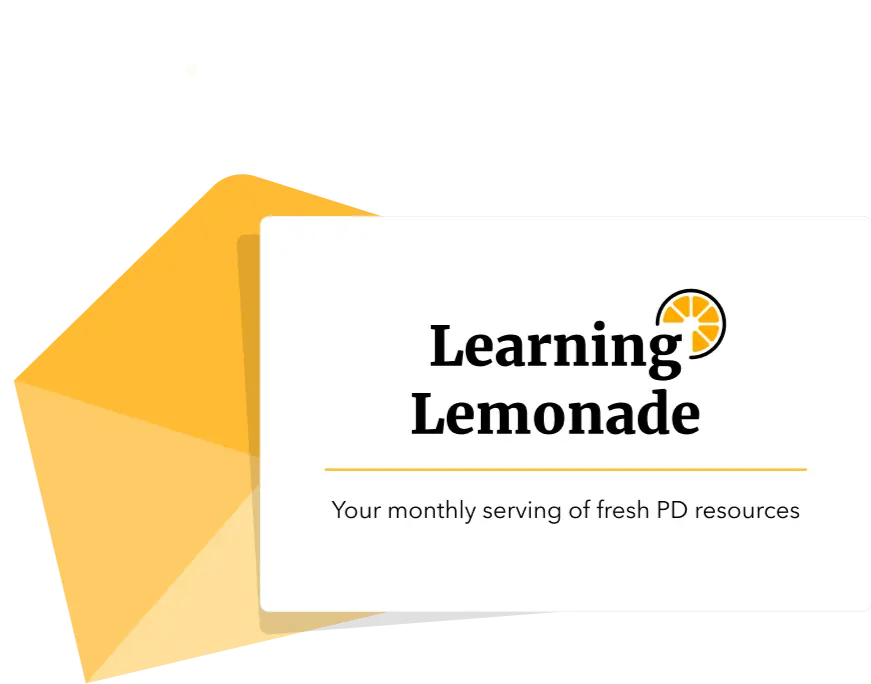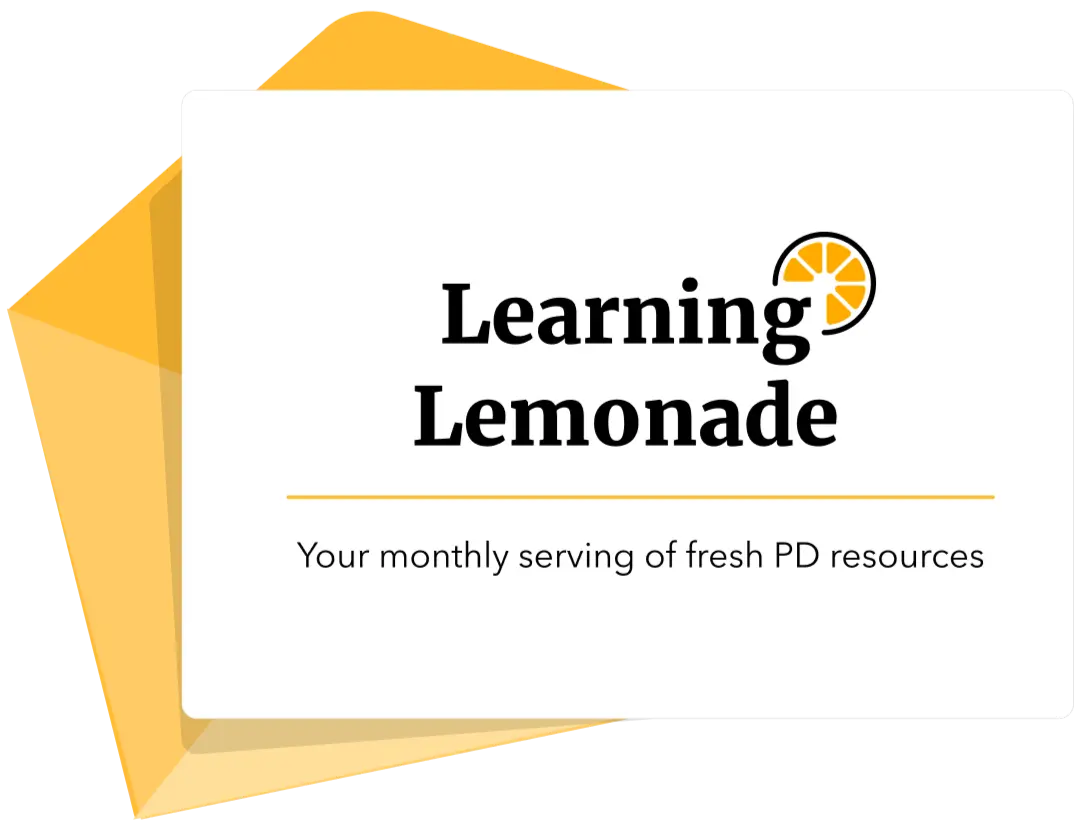9 Ways to Become a Super Creative IB PYP Teacher
‘The only way you can be wrong is if you’re not enjoying what you’re doing.’ This is a simple truth I tell my art students when they ask me ‘Is it correct?’. In the PYP art room we have the luxury of allowing children to explore, experiment and take risks. I carry the same philosophy for teaching, and if I’m not enjoying teaching then I’m definitely teaching wrong. A super creative teacher sees all learning as a chance to explore, experiment and take risks. Creativity isn’t about being able to draw, sing or dance. These things are a by-product of having tapped into a certain mindset where ideas begin pouring out. It’s why toddlers scribble, shout and run around without stopping to think ‘Is it correct?’.
If you have come to the understanding that you’re just not creative, then someone at some point in time has told you a whopping big lie. You definitely are creative, and these 9 ways will ensure that you are able to tap into that creativity inside and outside of your classroom.
1. See Your Limitations as Creative Opportunities
Every great invention exists today because someone recognised a problem and used their creativity to solve it. We can apply this way of thinking to our own problems or personal limitations that have so far prevented us from reaching our goals.
For me, the idea of presenting, or being a workshop leader had always sounded appealing. Yet nerves and the lack of ability to remember my lines had always gotten in the way of this. Instead of just giving up, I’ve used these ‘setbacks’ as ways to leap ahead by turning my personal limitations into creative opportunities.
Public Speaking
Public speaking was one I had to face sooner or later. I had always loved comedy, so I signed up for an open mic night at a local comedy club. I wrote five minutes worth of jokes and with shaking arms, jelly knees, and a few notes taped to my water bottle, I made it through a full set. It was by far the scariest thing I ever did, but I went back a few weeks later and did it again and again and again. I knew I wasn’t going to make a career out of comedy, but the next time I had to present at a teaching event, without the pressure of being entertaining or funny, I found that the butterflies were gone.

Remembering Words
In 2019, I was invited to present at TEDxYouth Jiangshan in China. I’d been asked to speak for 12 whole minutes about a series of books I had written aimed to teach children about global issues. So instead of memorising a speech, I made a large illustrated storybook, all about a teacher who writes books on global issues. When the day came, I sat on a chair and read it to my audience. It was a hit!

Too Much Information
I used to get in all kinds of trouble at school for not being able to copy off the blackboard fast enough. In art college I stopped writing any notes and just learned to listen. It was many years later that I began taking notes by drawing pictures that somehow caught people’s attention. Since then, I started sharing this talent with teachers, students and anyone else who wanted to learn. I’ve even been commissioned to take notes for the United Nations.

2. Know What’s Cool, Then be a Massive Dork
You can only truly be in your element when you’ve stopped worrying about how other people see you and can completely focus on doing your best. If like me, you are in fact a massive dork, then by all means be a massive dork. During online learning I began making instructional art videos for my students. Each time I would ask myself the following:
- How can I make this more entertaining?
- Can I use humour to get the message across?
- Can I obtain the same learning objectives but make it more about what the students are interested in?
- If I were seven years old, would I want to do this activity?
With these points in mind, I would reach deep into my inner dork and come up with a lesson that was entertaining to watch as well as fun to do.
3. Be Vulnerable and Honest
Authenticity is everything! Allow yourself to be vulnerable by asking for help and be honest about what you can and can’t do. It takes amazing courage to be both of these things and by letting your guard down you allow yourself to be open to new ideas.
- Know your strengths and try to build on them.
- Identify where you need to improve and ask for guidance.
Great ideas come when your mind is empty, and usually when you’re somewhere peaceful- away from distractions. Amazingly, in almost every school you visit, planning meetings take place in a classroom, where teachers are gathered around their computers looking at a planner on a word document. Outside-the-box thinking doesn’t take place whilst sitting in a box, looking at a box and filling in a box. Try planning in a different place like the middle of the playground. Try writing ideas down on a different shape or texture. I sometimes plan on a flattened out cereal packet with the flaps still on and everything. Try writing your ideas down with a funky pen or use crayons. If you continue the same weekly patterns you’re going to get the same sort of results.

4. Invite a Creative and Inclusive Culture
Every school in the world has a staff so rich in talent and experience, that if it were a turkey, we would be eating every part and then boiling the bones to make soup. Here are a few ways to make sure you make the most of your colleagues (creatively, not as food).
- Ask staff to list their talents and experiences on cards that the students have full access to. You could even allow your students to trade them like pokemon cards. Students need to know who to turn to when they have a question.
- Set up an Art/ Photography gallery in the hallway of staff artwork. Include anyone’s work who wants to participate. Display it with pride.
- Create a mini art/design project for students and teachers to both take part in. Mix up student work and teacher work when displaying it. It’s a good idea to provide a template so that work is the same shape and size.
5. Think of the Funnest Possible Way of Learning Something and Then Do Exactly That
If you’re wondering whether ‘funnest’ is really a word, you may be missing the point! This may require putting in those extra hours during the weekend but when that alarm goes off on Monday morning, you’ll be excited about the week ahead. One of my favourite lessons to teach as an English teacher is ‘Student Workshop’. The last time I did this, each student had to teach a 25 minute lesson on anything they wanted. They were given no other homework that week, other than to prepare for their lesson. Other students were given the option of which class to sign up for and throughout the lesson there would be 4 completely different classes taking place. There were ballet, chess, magic and even advanced maths lessons- all in one classroom! Students had to write out lesson plans as well as reflections on how they think their own lesson went.
It’s no surprise that students enjoy the lessons more when they are given responsibility and control over their own learning. You always know it’s a hit when the bell rings for recess and nobody wants to go out to play!

- Allow students to take control of their own teaching and learning. Remember that students may feel anxious about leading or sharing their topic. Be there to encourage them emotionally and offer support should they need it.
- Prioritize lessons with multiple learning objectives and make sure students know what these objectives are so they can see and understand the value of the task.
- Praise honesty in their reflection and let them know how impressed you are from what they have learned.
6. Draw Everything
It doesn’t matter whether you are a good artist or not. In fact, I’ve noticed that children pay equal or even more attention when their teacher tries to draw and it comes out poorly. Children and adults don’t want to read massive amounts of information when it can be broken down into a few pictures. If you’re a P.E. teacher, practice drawing things that are relevant to what you do, like a football or a hockey stick. If you’re a Music teacher, learn how to draw the instruments you use in your lessons. Keep pictures as simple as possible and use fancy arrows and shapes to make your work more interesting. If you want to try sketchnoting I’ve drawn out a few shapes below to help you get started.
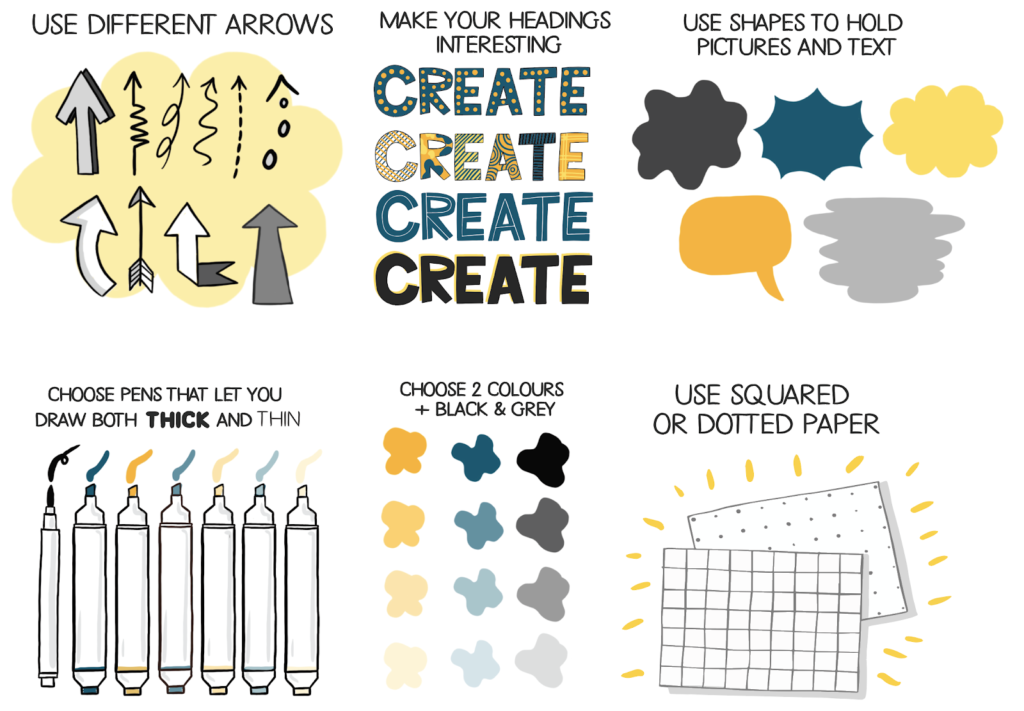

- Practice drawing objects relevant to your field
- Keep pictures simple
- Next time you are giving an explanation, ask yourself if a picture would be easier to understand
7. Make Your Own Lettering
If everyone knew how easy this was then everyone would be doing it. Create your own font and use it on everything from display boards to newsletters. It gives everything you do a more personal feel.
- Try downloading an app such as iFontMaker and create your own font.
- Practice writing headings in interesting ways. Practice the difficult letters in particular such as the letter ‘s’.

8. Sharing is Daring
There are many ways of sharing what you are doing with the wider teaching community. You could start a blog, contribute to a podcast, share on twitter or instagram. Go to teacher events like ‘PubPD’. You could present or run a workshop or even do a webinar! Personally, I find the feedback I get from other educators to be extremely useful and the more that I share, the more I can improve on my teaching practice. When researching this webinar, I reached out to other educators to find out what they wanted to learn and received loads of valuable feedback.
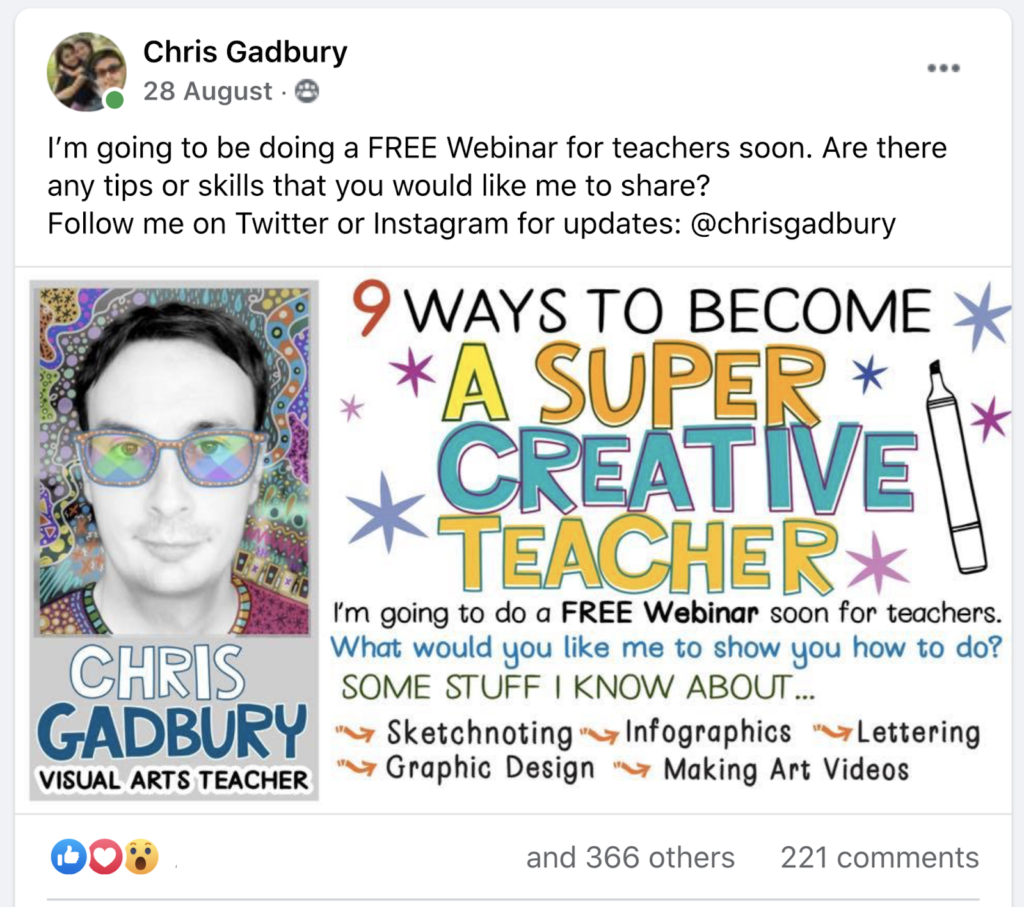
9. Don’t Aim for Perfect- Aim for Very Good
We often put too much pressure on ourselves to make something perfect. I have spent countless hours staying up until the sun rises and the birds start chirping, trying to get something to be perfect and I’d tell myself, ‘If I just spend one more hour, it will be perfect’. I learned to stop doing this to myself and as a result I have a lot more very good work that I am proud of, rather than a few things that are never quite finished. You can’t be creative, if you never actually create something. Having ideas isn’t being creative. You have to actually make them happen. So trust me when I say don’t aim for perfect; aim for very good.
I remember sitting through my first PYP training session with all the new terminology and feeling slightly overwhelmed- Key Concepts? Learner Profile Attributes? It all seemed a little too much! Ten years later the Enhanced PYP documents came out and I thought back to those first few weeks and considered how challenging it must be for new teachers, parents and students. I decided that I would spend the weekend putting it all together into one big colourful document. Once again, I had used creativity to solve a problem and had used my own lettering, drawing, sharing and everything else I mentioned throughout this blog post. I called it ‘Making the Enhanced PYP Simple’.
Within a few days of uploading it to Twitter I was seeing it in photos all over social media platforms such as classroom walls, presentations and in PYP training sessions and it’s now being used all over the world!
When you create something, whatever it might be, allow other people in your PYP teaching community to see it. If you enjoyed the process of making it, then it’s definitely worth sharing!
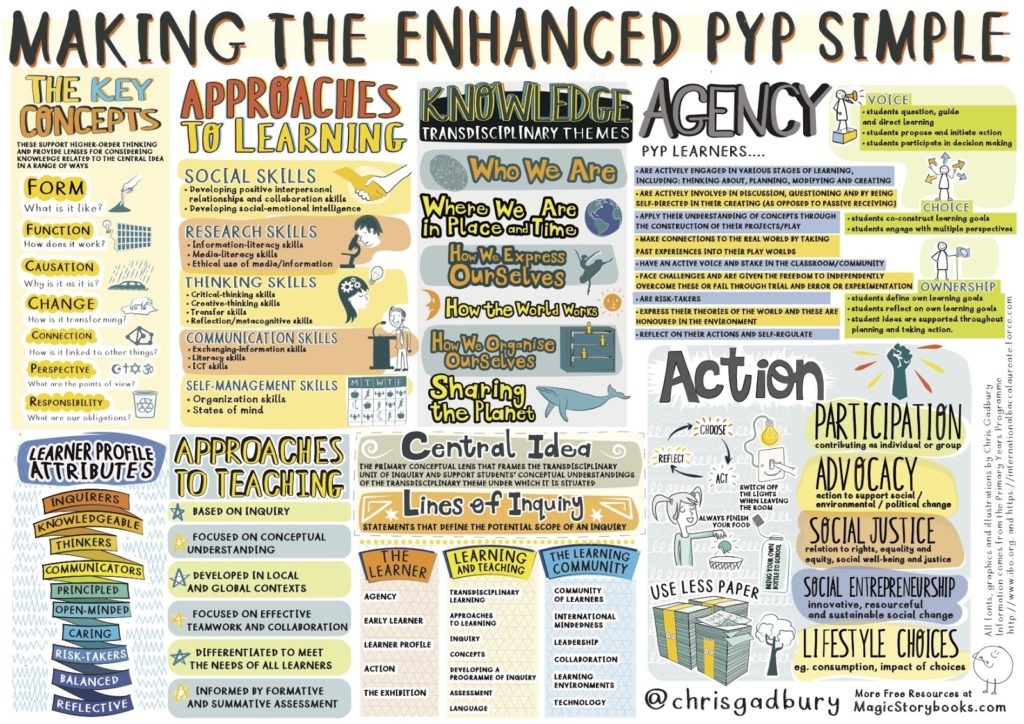
Watch Chris dive into these ideas and strategies in his Toddle Talks webinar here










